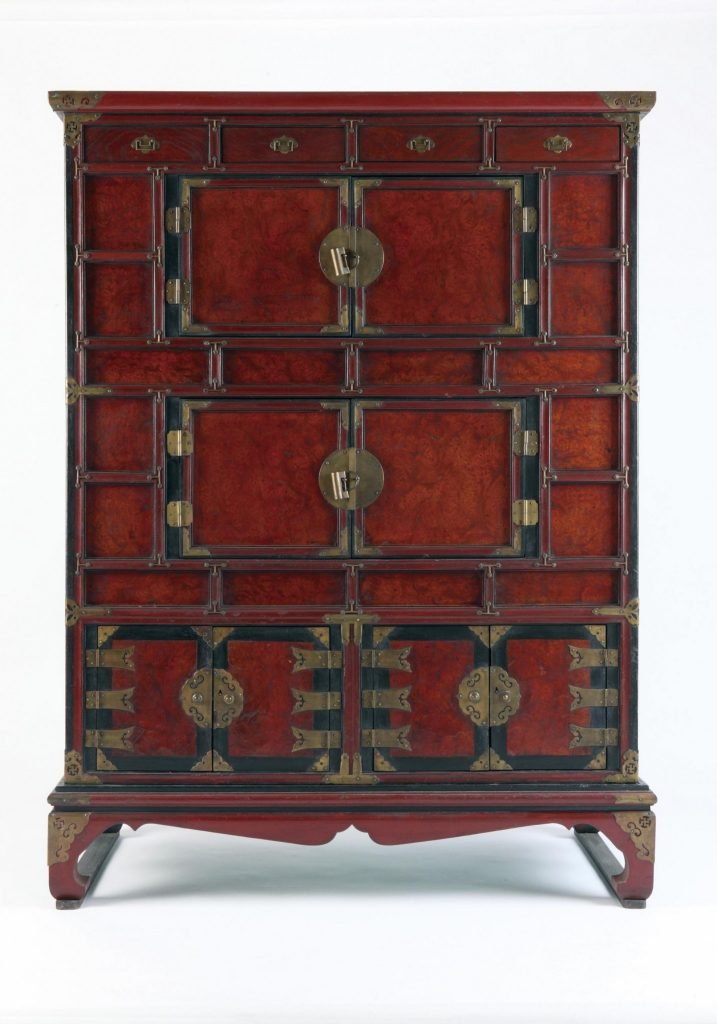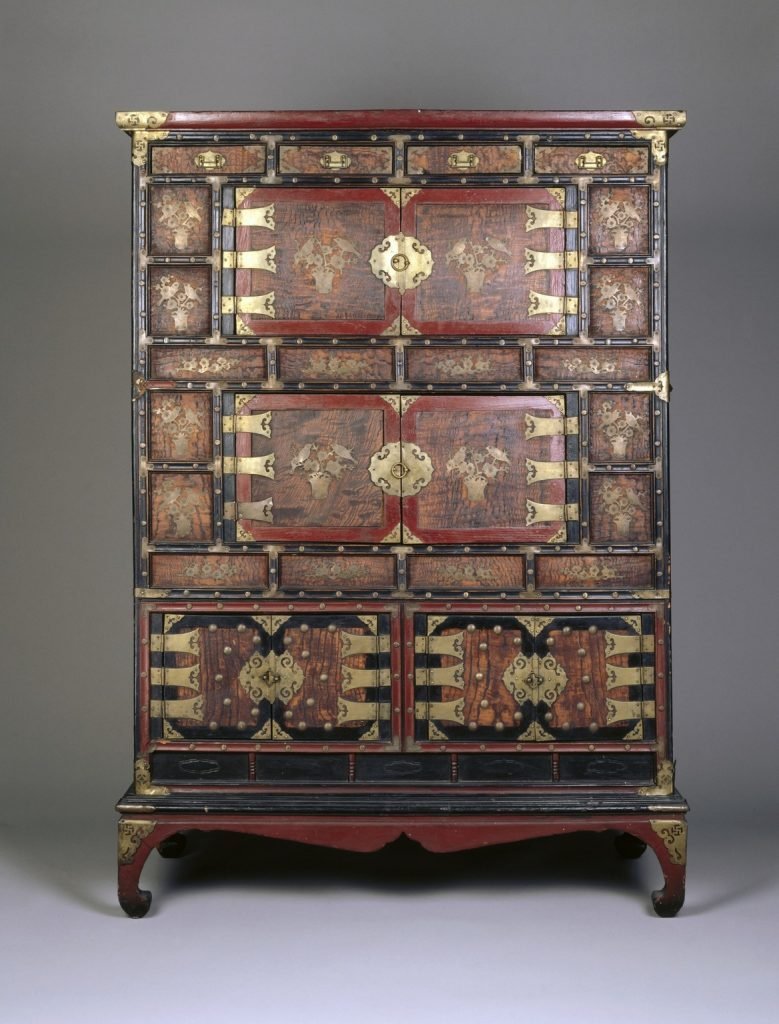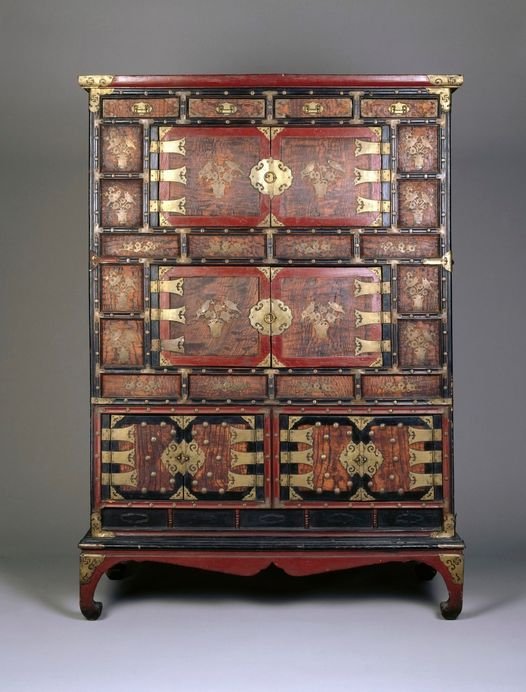Most household items were kept in the women’s quarters, stored within large cabinets and chests. These pieces of furniture were usually the most substantial and expensive in the home, presented to the couple upon their wedding.
The tall piece featured here is referred to as a “mandarin duck” cabinet due to its paired openings at the base. Mandarin ducks, known for forming lifelong bonds, symbolize the number two and signify joyous marriages.
The Mandarin Duck Cabinet depicted above dates back to the early 20th century and is part of the Brooklyn Museum’s collection. Further details are provided in the full description below.


H. 147cm, W. 104,5cm, D. 53,5cm,
Collection of the National Folk Museum of Korea.


K Auction, Seoul, Korea.

The name “mandarin duck cabinet” comes from the double doors on each tier. This cabinet was produced mainly to be included in a bride’s dowry, and signified well wishes for the newly wed couple’s long and happy marriage. This particular cabinet shows the typical characteristics of Gyeonggi region mandarin duck cabinets. From “Korean Art Collection in the Brooklyn Museum” catalogue. Mandarin ducks mate for life and tend to travel in pairs. As a result, many Asian cultures associate pairing and marriage with the ducks. From Accession Card: Red and Black lacquer on wood, zelkova burl panels, pine side and back panels, brass fittings. This large, rectangular chest, with its multiplicity of panels and moldings and ornamental hardware, indicate it was made for the women’s quarters in the home of a member of the royal family. Chests decorated with red and black lacquer were usually restricted to royal use. Confucianism required upper class Yi Dynasty men and women to maintain separate living quarters within the same house. They ate separately, slept separately, although husbands could visit their wives during the night. The chest rests on low, somewhat curved feet, painted a dull red and bound at the corners with brass plaques. The front of the chest is divided into two lower compartments side by side, two larger upper compartments one about another and a small top row of small flat drawers. Each compartment has double doors that hinge at the sides. The main frames and most of the moldings are in black lacquer, as are the five low panels across the bottom. The frames of the upper and middle pairs of doors are in red lacquer. The door panels, the fronts of the four small drawers across the top are zelkova burl wood: the side panels and back panels of this chest are made of pine and are undecorated. The brass fittings on this Chest are unusually elaborate; the hinges, latch plates, drawer pulls and corner fittings all have complex ornamental openwork. Decorative brass plaques depicting plants and songbirds were applied to each main panel on the front. The interior is papered.





Mandarin Duck Cabinet (4 photos). Collection: Gallery Vintage Addict, Liege, Belgium.
H 160cm, W. 108cm, D. 54.5cm. The piece of furniture is enhanced with applied fittings in cut and chiseled brass, opening onto 3 levels. The two upper boxes have two doors while the first is equipped with a pair of double doors, each revealing a box with 4 asymmetrical drawers.

